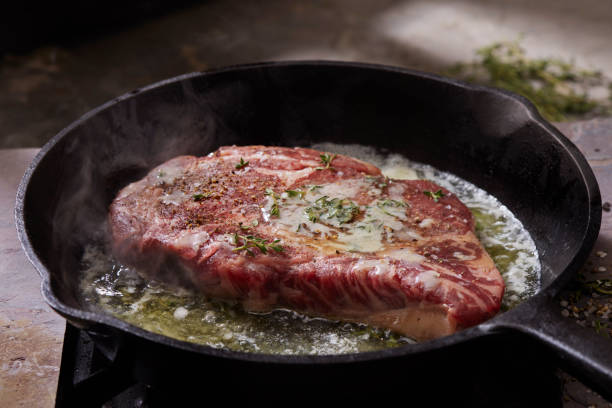When it comes to cooking steak, two methods often stand out: grilling and searing. Both have their unique charms, and steak lovers around the world passionately debate which one is superior. In this article, we’ll explore the characteristics of grilling and searing, the pros and cons of each, and ultimately determine the best method for cooking a mouthwatering steak.
Grilling: The All-American Classic
Pros
1. Charred Flavors: Grilling imparts a distinct smoky flavor to the steak, thanks to the open flames and the sizzle of fat hitting the grill grates. This flavor is quintessentially American and beloved by many.
2. Versatility: Grilling isn’t limited to just steaks. You can cook various meats, vegetables, and even fruits on a grill, making it a versatile option for outdoor cooking.
3. Attractive Grill Marks: The visually appealing grill marks on the steak give it a professional and appetizing appearance.
4. Even Cooking: With indirect grilling, you can achieve a consistent level of doneness throughout the steak, from edge to center.
Cons
1. Difficulty in Searing: Achieving a proper sear on a steak can be challenging when grilling. The heat is often not concentrated enough to create that perfect crust.
2. Longer Cooking Time: Grilling can take longer than searing due to indirect heat. This can lead to drier steaks, especially if not monitored closely.
3. Flare-Ups: The open flame can cause flare-ups that may result in uneven cooking and charred spots.
4. Inconsistent Heat: Depending on the grill, there may be hot and cold spots, making it challenging to maintain precise control over the cooking process.
Searing: The High-Heat Sensation
Pros
1. Perfect Crust: Searing uses high, direct heat to create an irresistible, caramelized crust on the steak’s surface, sealing in the juices and flavor.
2. Speed: Searing is quick, taking just a few minutes to achieve a beautifully browned exterior while keeping the center juicy.
3. Versatility: Searing works well on thick cuts, thin cuts, and even sous-vide cooked steaks. It’s a method that complements a variety of steak preparations.
4. Indoor Option: Searing can be done indoors on a stovetop, making it a year-round cooking choice regardless of the weather.
Cons
1. Smoke and Splatter: Searing generates a lot of smoke and can create a mess in the kitchen. Proper ventilation and a splatter screen are essential.
2. Uneven Doneness: Achieving an even level of doneness from edge to center can be more challenging when searing, especially with thicker steaks.
3. Limited to Smaller Cuts: Due to the high heat involved, searing is best suited for thinner cuts. Larger cuts might be unevenly cooked.
4. Risk of Overcooking: Searing at high temperatures can lead to overcooking if not carefully timed, especially with thinner steaks.
The Best Method for Steak
While both grilling and searing have their merits, it’s essential to recognize that they are not mutually exclusive. In fact, many steak enthusiasts use a combination of these methods to achieve the perfect steak.
For thicker cuts of steak, starting with a reverse-sear method is often recommended. This involves cooking the steak at a low temperature (grilling or oven) to the desired internal temperature and then finishing with a quick sear. The reverse-sear method ensures a tender, evenly cooked steak with a gorgeous crust.
For thinner cuts or when you’re looking for that classic, smoky grill flavor, grilling is the way to go. Just be mindful of flare-ups, manage your heat zones, and monitor the cooking time to prevent overcooking.
